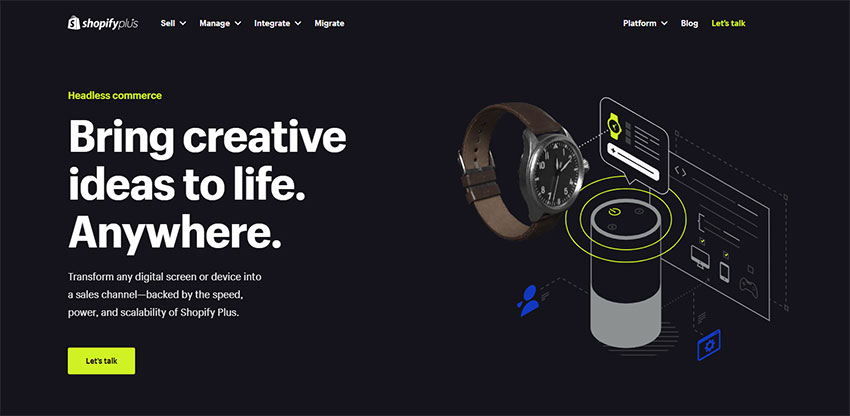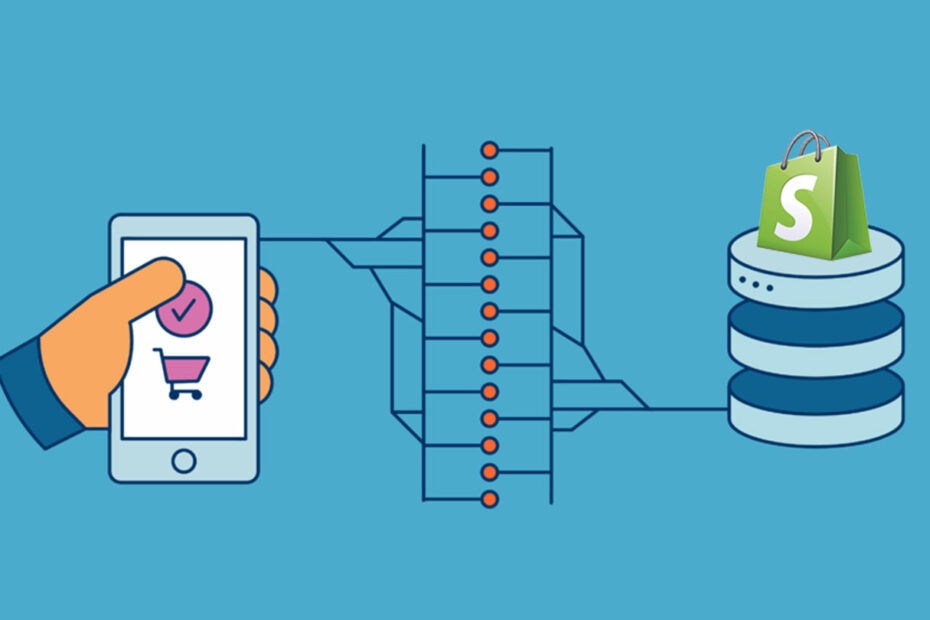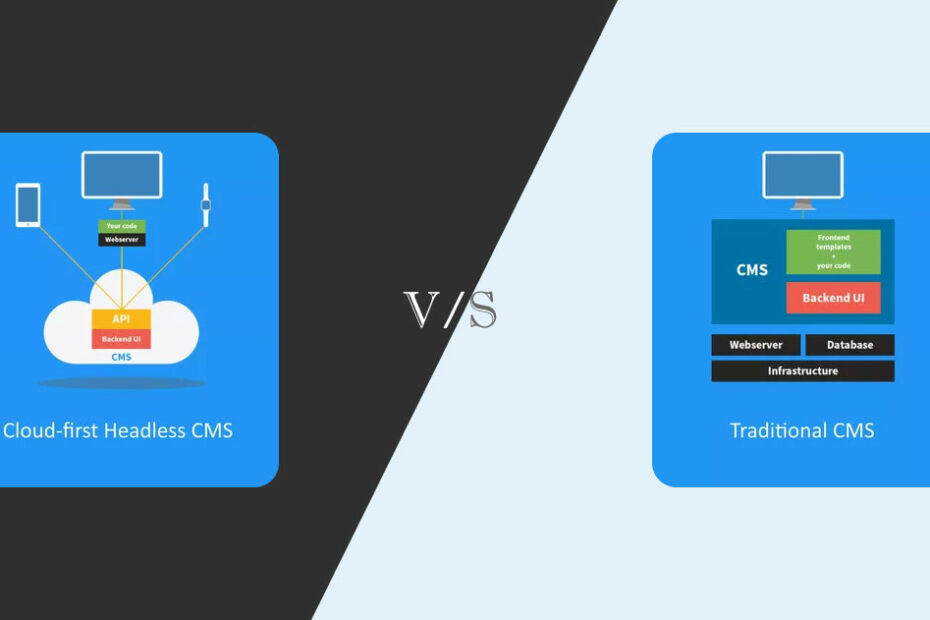Headless eCommerce architecture has been in limelight since its introduction in the industry. But, not every business needs a headless approach. The larger organizations and enterprises businesses that are likely to scale up and require customization can benefit from headless eCommerce solutions. Out of all, Shopify is the most used platform to build eCommerce websites. Is Shopify headless eCommerce worth trying? Follow this Shopify headless commerce guide for more information:
What is a headless Shopify?
Shopify is one of the most emerging eCommerce platforms that allows retailers to launch their businesses and sell online through highly functional eCommerce websites. Due to its huge popularity, the number of Shopify users is increasing each day. Though Shopify offers amazing benefits with its CMS, the platform has certain limitations. When it is time to grow your business or enter the global marketplace, the Shopify features restrict your business capabilities. When this amazing platform goes headless, the result would provide endless opportunities for the developers. The headless eCommerce architecture comes with decoupled front-end and back-end functionality. The Shopify headless commerce allows you to make instant modifications on the front-end without the need for the developers to interrupt the complex back-end infrastructure.
Why use Shopify Headless Commerce?

Technology is evolving at a faster pace than ever before. To match the technological progress and ever-changing expectations of the consumers, your business should be as flexible as possible. Headless commerce architecture is a one-stop solution to provide a highly flexible eCommerce platform. Since the introduction of headless eCommerce solutions, Shopify has been emerging as one of the best headless eCommerce platforms. Read on to know why to use Shopify headless Commerce:
- Building a customized eCommerce store can be overwhelming. Thanks to the progressive developments of the technologies, read-made solutions are available to let you build a custom webshop faster than ever.
- The separated layers of front-end and backend infrastructure of headless allow you to use multiple technologies and keep your business future-ready.
- Headless commerce architecture allows the highest level of personalization to your stores resulting in higher conversion rates.
With headless, get full control over your website’s content, structure, and navigation and make your site SEO friendly to attract organic leads.
Pros and Cons of Shopify headless eCommerce
Pros
- Shopify’s URL structure is limited. The URL structure can affect your site’s SEO and make it difficult for Google to index your web pages. Opting for headless Commerce solutions allows the store owners to customize their site URLs and include more product details in the URLs to improve the product visibility and also the SEO ranking.
- As your business grows in size, complex coding starts to haunt your site and reduce the site loading speed. Go headless. As it operates independently, you can make any changes in the front end by pulling the data from the backend through APIs. Thus, there is no burden of excess code resulting in higher website loading speeds.
- With Shopify headless commerce, you can go omnichannel i.e., it lets you publish the same content on any device and channel. Thus, creating consistent user experiences on all devices.
Cons
- Going headless on Shopify requires a lot of customization on themes, apps, and other functionalities. Thus, it makes the architecture more complex and difficult to manage. Though it is an excellent solution for the long-term, if you don’t have a robust team and plan, going headless is not recommended.
- By going headless, you can no longer access Shopify’s theming engine or app proxy. Thus the access is limited to Shopify’s inbuilt themes and related add-ons. Also, the developers have to build themes from scratch which can be a complex and time-consuming process.
How do I make my Shopify headless?
As the front-end is decoupled from backend infrastructure allows Shopify to combine with a different CMS and serve the content. Follow these steps to build a successful Shopify headless eCommerce storefront for your business:
1. Selecting the technology for your storefront
- Make sure to evaluate your team’s skill set and how each technology helps to satisfy the storefront’s technical requirements. Then, decide on the right technology to build the user interface for your storefront.
- Most Storefronts templates build on Shopify use Shopify Storefront API and are coded in React.js and Ember.
- Other options for choosing the right technology for your storefront are static generators like Gatsby.js and Next.js, or headless content management systems like Contentful or Prismic.
2. Get to know about Shopify Storefront API
The Storefront API is available with GraphQI. Shopify’s GraphQL guide is an excellent resource to get you started.
3. Getting an access token
- Go to the Shopify admin and choose the Apps section.
- Select Manage Private Apps. Create a new private application and enter your name and email address.
- Under the Storefront API section, check the box labeled allow this app to access the storefront data using the Storefront API. You can decide on which types of data can be exposed to the app.
- Click Save. You can find the storefront access token under the Storefront API section at the bottom of the page.
4. Build and customize your storefront
- Look at the examples of custom storefront applications and know-how the customization of your storefront is done.
- For a React.js application, install the JavaScript Buy SDK docs with NPM and Yarn. then, import the client object into the application code. Go through the JavaScript Buy SDK docs and official API documentation on the Shopify website for guided resources.
Frequently Asked Questions
1. What is headless eCommerce?
A headless approach is the separation of the back end from the front end presentation layer. It allows the developers to provide greater customizations and create unique customer experiences for their customers.
2. Is Shopify a headless CMS?
Going headless on the Shopify eCommerce platform opens up limitless opportunities for businesses to scale up. The online merchants can use third-party applications to create/ modify the front-end presentation layer without disturbing the backend structure. The data is pulled from the Shopify store via GraphQL Storefront API.
3. Do you need Shopify Plus for a headless approach?
No, Shopify plus is not compulsory for the headless eCommerce approach.
Conclusion
Is Shopify’s headless eCommerce worth it to use in 2022? Yes, without a doubt, going headless is highly rewarding. But it is not compulsory for all businesses. Headless commerce architecture is beneficial for large enterprise businesses. Other small and medium enterprise businesses can work using traditional architecture.
Are you thinking of creating a customized storefront that can drive traffic and convert better? Do you want to create unique user experiences for your customers? Do you feel like you are left out of the competition in your industry? Going Headless on Shopify helps you solve all of your problems. If you want to build a robust Shopify store using the headless approach, write to us. We help you build a feature-rich eCommerce platform and provide timeless solutions to your business.



Leave a Reply